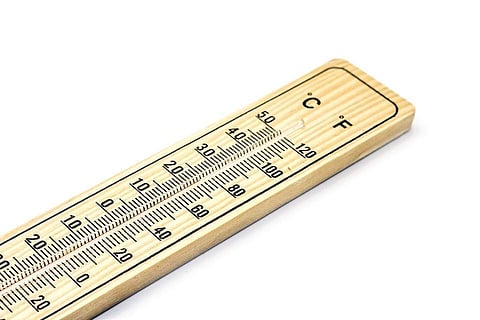

HYDERABAD: Much of the world is in the grip of a heatwave, Telangana being no different. The State continues to reel under scorching heat, as extremely high temperatures are being recorded at many places for prolonged periods, without any break. But are these sweltering temperatures just a freak event, or part of an ominous trend we need to prepare for?
There is no other option but to change our practices and lifestyle to tackle climate change, said Dr KJ Ramesh, Director General of Meteorology (DGM), India Meteorological Department (IMD), on Thursday, while interacting with the Editorial team of The New Indian Express.
When asked regarding the phenomena like delayed monsoon, long dry spells during the monsoon and prolonged heatwaves, Dr Ramesh said that we just have to get used to it and change accordingly.
The agriculture sector is one sector which is severely impacted due to erratic monsoon rains. Giving an example of how to deal with climate change, Dr Ramesh said crop varieties that are low-moisture tolerant, provide yields in short duration or are drought-resistant should be grown, depending on the change in climatic condition observed in a given area.
This makes it necessary to develop a crop calendar that suits these needs, said Dr Ramesh. He gave examples of how some states have already started changing their agricultural practices and have started planting Basmati rice varieties that yield higher crop in short duration.
‘Rainfall in India set to increase’
However, climate change is not always bad. Dr Ramesh said various studies have reported that regardless of the carbon emission scenario, whether it is low or high, the total rainfall in India is set to increase in the coming years, which is good news for an agriculture-dependent country.
Moreover, he pointed out that even though the number of rainy days has been decreasing in the country over the years, there is no drastic change in the overall volume of monsoon rainfall because of high-intensity rainfall days, filling the gap of long dry spells. Dr Ramesh stressed that a combination of these two factors would mean that there will be a rise in water resources in the country in the future. However, this makes it more pertinent to have good water usage policies and effective implementation of water conservation measures, so that these resources prove useful.
Plans to beef up the IMD with more Doppler radars
The IMD is in the process of adding 11 more Doppler radars to the Western coast of India, to be located at various places that are vulnerable to cyclones, said Dr KJ Ramesh. The IMD has already beefed up the country’s Eastern coast with 27 Doppler radars. He said that 2006 proved a landmark for the IMD, when the Ministry of Earth Sciences was created, and 10 institutions including IMD were brought under it. Two years back, modernisation worth around Rs 430 crore was undertaken in the IMD
‘Even slight changes in weather can cause damage’
Dr Ramesh pointed out that although the country warmed by an average of 0.7 degree Celsius every year in the period 1901-2016, even such slight changes can have much more damaging impact on India than in western countries, where the warming has been above one degree Celsius annually. This is because there are many places in India where the baseline temperature itself is high, above 36-37 degree Celsius